Bird Box (2018) is the new Netflix sci-fi horror-survival film helmed by esteemed Danish filmmaker Susanne Bier. It stars Sandra Bullock as a woman who must guide two young children through a world in which you cannot open your eyes outdoors or you will die. The film is written by Eric Heisserer, who penned one of the cleverest sci-fi films of the decade in 2016’s Arrival. The film is sure to draw comparisons to A Quiet Place from earlier in the year, with a similar premise surrounding a malevolent being preying on one of the five senses. What sets this one apart?
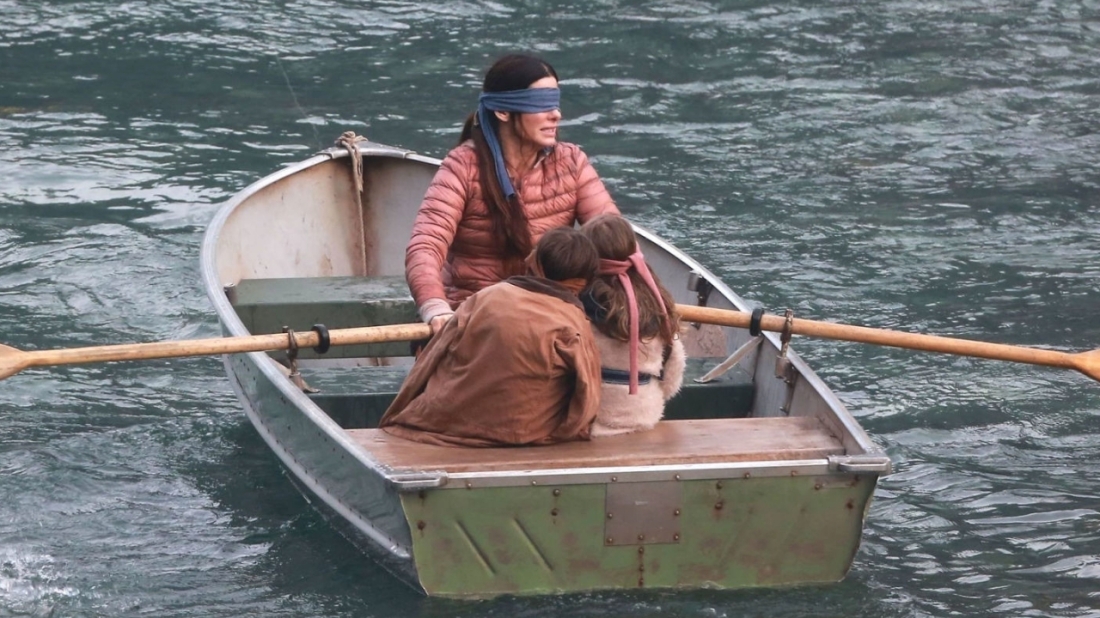
Over the past few years, I’ve become wary of films overusing nonlinear storytelling. Ever since Tarantino popularized the technique in the early 90’s, it has become a staple of filmmaking with mixed results. By definition, it is a heavy-handed device – the filmmaker inserting him/herself into the narrative, letting us know that they are guiding us through the film in the way they intend for us to experience it. That requires an element of trust from the audience, that the director/writer has a plan in mind for us and is guiding us on this convoluted journey through time for our own benefit. Tarantino did it with Reservoir Dogs, jumping straight from the planning of a heist to its bloody aftermath to pique our curiosity about the in-between. Kenneth Lonergan also did so expertly with Manchester by the Sea (2016), using nonlinear storytelling to make us curious about Lee’s lifestyle and seek answers for impending questions. Hell, even Heisserer’s most recent script, Arrival, used flashbacks as a clever narrative ruse to disguise the fact that we are seeing the future.
Which is why I’m disappointed that the technique was utilized so poorly in Bird Box. The film begins with our hero Malorie and her two wards setting off on their perilous journey down the river, bird box in tow and blindfolds drawn. Immediately several questions are raised: why the blindfolds? What’s up with the birds? Who are these two children and why is Malorie alone with them? This is a good setup for nonlinear story structure: posing questions to the audience and using flashbacks to answer them. The problem is, the flashbacks dominate the film and make up the bulk of the plot, begging the question of why we needed to start so late in Mal’s journey rather than from the beginning.
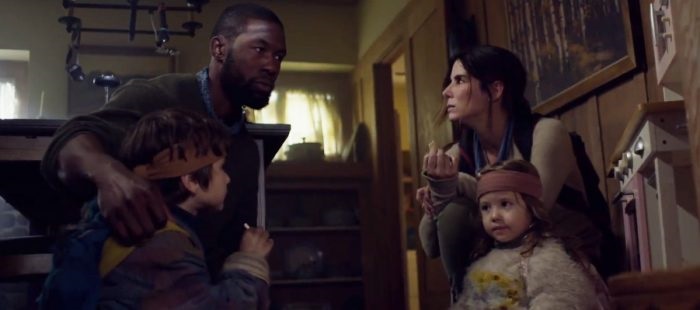
It’s implied that Malorie has learned many things in the five years between the outbreak of the “Problem” and the present-day circumstances on the river. She acts decisively and deliberately, as though she’s become an experienced warrior in this trying time. We would expect that the flashbacks show her learning these things through experience, and to a degree that’s true. Her prior experience with the survivors definitely informs her decision-making in the present. But rather than personal experience, she gains knowledge from simply being told things and letting other people figure things out on their own. Malorie is never given an opportunity to learn things for herself. She simply watches passively as bad things happen to other people and she escapes by the skin of her teeth. These moments would be tense, but because we already know she survives for five years after, there’s no tension.
This got me thinking about the three-act structure of the film. The flashbacks, where Malorie meets the survivors and starts to understand the nature of the Problem, is Act I. The river sequence, where she and the children flee for safety, is Act III. Where is Act II?! There is a giant gap missing in the film, the part where Malorie learns things for herself and takes action towards a goal. Herein lies the problem with the film: it is only 2/3’s of a film. The nonlinear story structure masks this fact by utilizing a prolonged Act I and Act III and splicing them together. We see Malorie in her initial, scared phase and later in her hardened, experienced phase. Where’s the learning phase? We skipped straight from the surface-level sympathy for Mal’s dilemma into her taking her final actions, and thus, it feels hollow because we didn’t get to see her grow as a person.
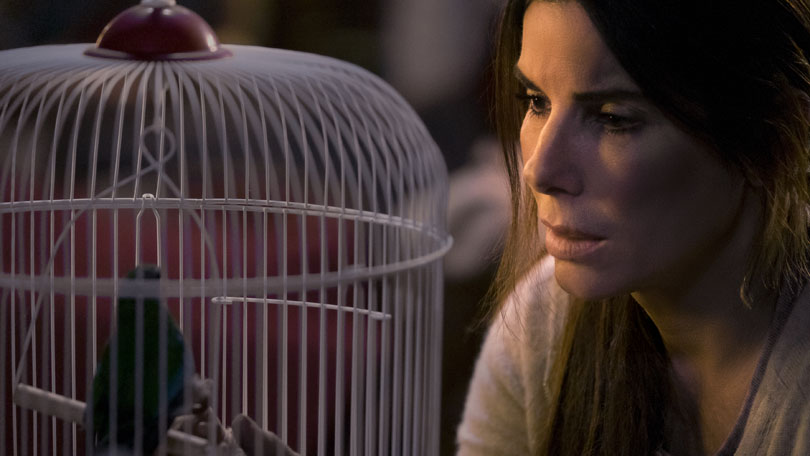
To the writer’s credit, Malorie has a glimmer of personal stakes with her pregnancy and character setup. She is established as a person who doesn’t like to face problems head-on, preferring to let things build up until they simply can’t be ignored anymore. This is a solid setup, especially for a pregnant woman, that I would’ve loved to see a proper character arc for. But again, disappointingly, it’s as though the middle part of her journey is eliminated from the film! Mal’s relationship with the children is intriguing and probably the strongest part of the film. The film was based on a book, though, so I don’t know if I can even give Heisserer credit for this. Perhaps his greatest sin is in not giving us enough time with Mal and the kids to establish their rapport and develop audience attachment to their collective survival.
I also hated the way information is revealed throughout the film. As mentioned earlier, the film does a good job of establishing questions early on, but it botches the reveal of information badly. Film is a visual medium, and I want to see things unfold, not be told how everything works. A Quiet Place did this well by establishing the rules of the world in the opening scene, without needing a single line of dialogue. Here, the flashback scenes exist so the group of survivors can state everything in plain terms as though the audience isn’t smart enough to figure things out on their own. Even when we do get to see some new bit of information, a character pops in a scene later to explain what we just saw. Shit man, give us some credit! This is especially damning because on the few occasions where they don’t explain things clearly (like the birds’ role in all of this), we miss the nuance because we’re expecting to be fed the info on a silver platter. For shame!
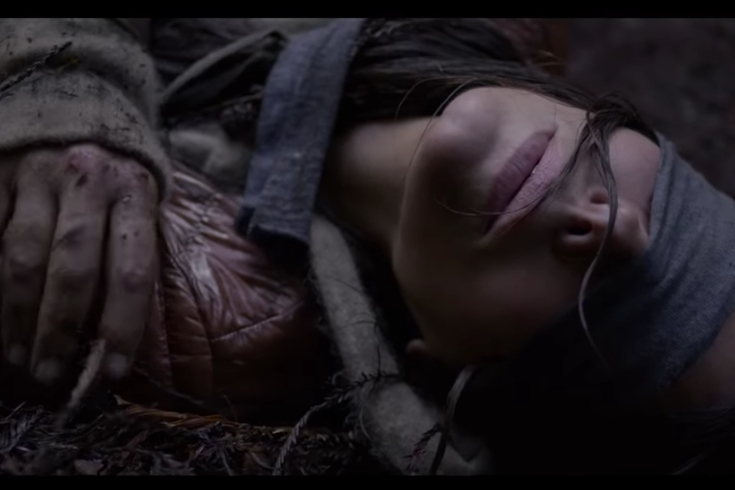
The film boasts an impressive cast that is all woefully underused (or worse, misused). Sandra Bullock gives a strong performance, but because her character lacks nuance, it comes across as one-note at times. In a given scene she’s fairly monotone, sticking to either frustration or fear or anguish with no range. Her motivations are so unclear for so long thanks to the nonlinear structure that it became frustrating to watch her act because I didn’t know what she was going for at all times. Veterans John Malkovich and Jacki Weaver clearly needed a paycheck because they show up for a few melodramatic scenes before disappearing. Trevante Rhodes also features prominently in the film, and I loved his performance in Moonlight to death, but he didn’t do it for me. Maybe it’s the age difference, or the lack of chemistry, or the stilted dialogue, or whatever, but I didn’t buy his romance with Malorie one bit. The only performance I really liked was Tom Hollander as a mysterious outsider who they let into the house, and we get to wonder along with the survivors whether or not to trust him.
In spite of all the film’s problems, there are some silver linings. The production value is solid; it’s clear the film was shot on a low budget but it still looked alright and conveyed the necessary tone. The river rapids scene in particular was exciting and made me wonder how they managed to shoot it safely. And despite the poor execution, the premise is strong, and there are some genuinely gripping moments of terror. Watching characters try to survive in situations where they can’t see is a novel idea and one that is occasionally unique and fun to watch. As mentioned above, the relationship between Malorie and the two kids is intriguing and betrays hints of a compelling character arc, even if it rushes the arc terribly to make room for the time jumps.
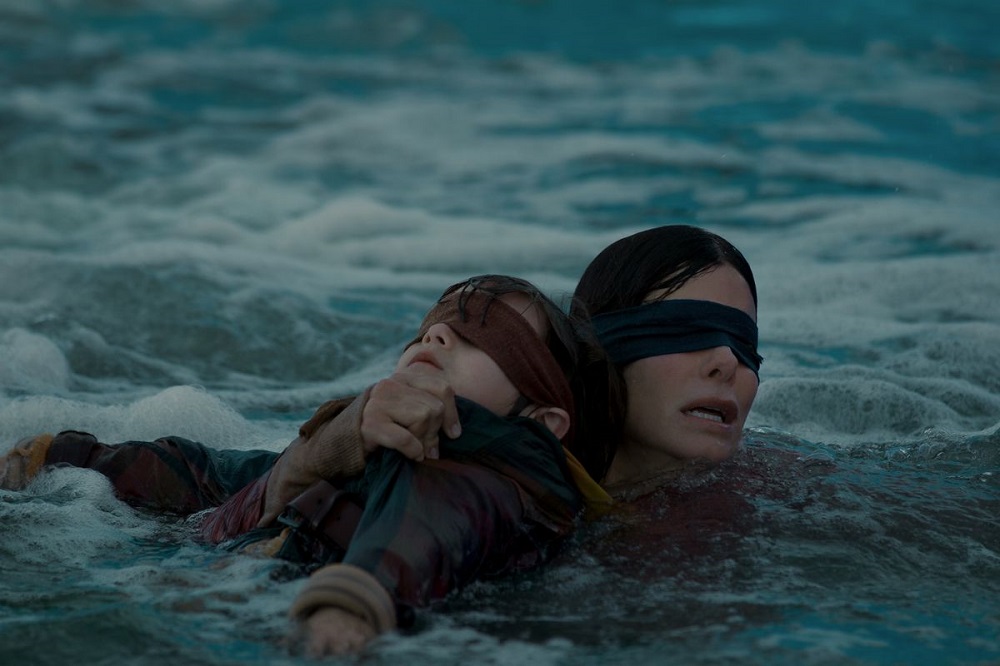
Conclusion
I’m not gonna come out and say that Bird Box is a bad movie, but at best it’s a merely competent one. It provides cheap thrills, but thrills nonetheless. I just feel like I’ve seen this movie dozens of times, and it falls into many of the pitfalls that plague the horror/survival genre nowadays. The nonlinear storytelling is the film’s attempt to distinguish itself from the pack, and it fails miserably. All we’re left with is two-thirds of what could have been a solid movie. Not a good movie, mind you, just a decent one. And it fell short of even that, so make of that what you will.
VERDICT: C-
-Austin Daniel
All image rights belong to Netflix.
Christmas time is here, and that means good family, good food and fun, and good movies! I’ll be checking out the remainder of the holiday movie fare soon, like If Beale Street Could Talk, Vice, and whatever foreign pictures I can get my hands on. See you soon!